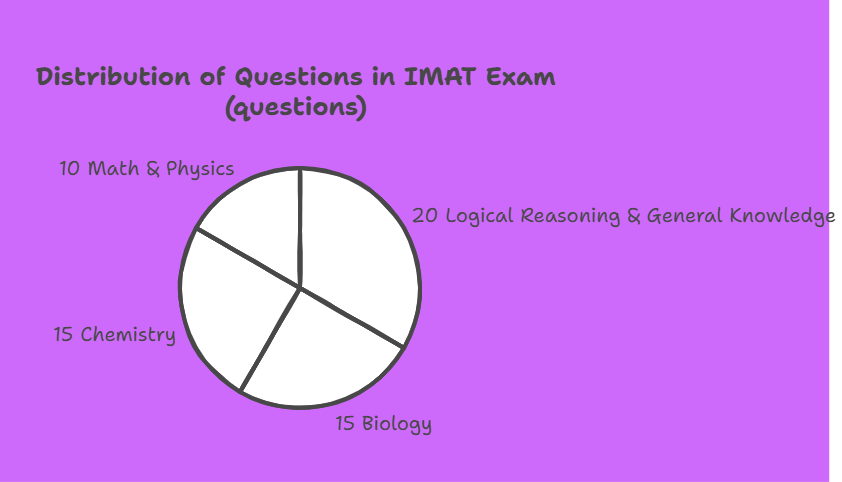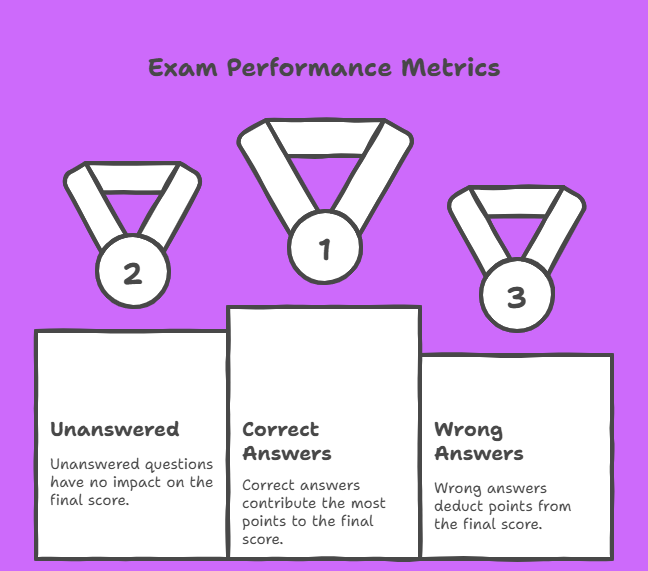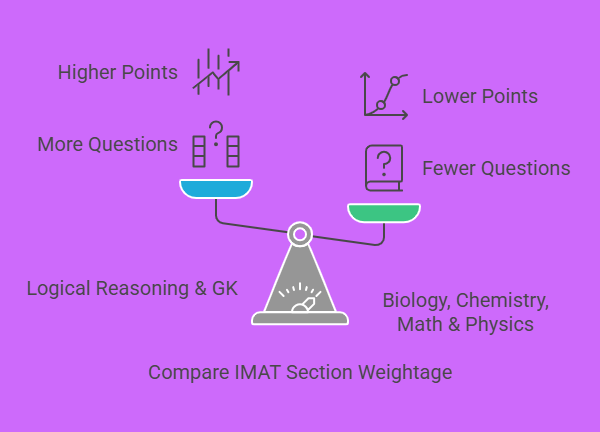
Have you ever heard about the IMAT exam? To study medicine in Italy, you must take the IMAT exam. IMAT stands for International Medical Admissions Test. It’s what students from all over the world take to get into Italian medical universities that teach in English.
Now you might ask, “Why should I care about the IMAT scoring system?” Well, knowing how your test is scored helps you plan better, study smarter, and avoid losing points. It’s not just about answering questions. It’s about knowing how each answer can help or hurt your final score.
In this blog, we’ll explain the IMAT scoring system in a very simple way. We’ll show you how the points work, what a good score looks like, and how to use this knowledge to your advantage. So, let’s break it down step by step—no stress, no hard words—just clear and easy facts!
What Is the IMAT Exam?

The IMAT is a special exam for students who want to study medicine in Italy, but in English. It is accepted by many top medical universities in Italy, like the University of Milan, Sapienza, and University of Rome, and more.
Quick Look at the Exam Format
The IMAT is a paper-based test. That means you answer questions on paper, not on a computer. You have 100 minutes (that’s 1 hour and 40 minutes) to finish the whole test.
The exam has 60 multiple-choice questions. Each question has 5 options, but only one is correct. This is where the IMAT scoring system becomes really important, because every right and wrong answer affects your final score!
How Many Questions Are There?
There are exactly 60 questions in total. These are split into different subjects. You’ll need to answer them all within the time limit.
Subjects Included in the IMAT
Here’s what the 60 questions are about:
- Logical Reasoning & General Knowledge – 20 questions
- Biology – 15 questions
- Chemistry – 15 questions
- Math and Physics – 10 questions
Each section is important, and all of them together count toward your total score. The IMAT scoring system doesn’t give the same weight to all topics, so knowing which subjects are stronger for you can help you plan smart!
How the IMAT Scoring System Works

Let’s talk about how your answers turn into points in the IMAT scoring system. This part is super important because it helps you understand how your final score is calculated.
Total Marks
The maximum score you can get on the IMAT is 90 points. That’s the highest score possible if you answer everything correctly.
How Points Are Given
Here’s how the scoring works:
- Each correct answer gives you +1.5 points
- Each wrong answer takes away -0.4 points
- No answer means you get 0 points
So, it’s not always smart to guess. If you’re unsure, sometimes it’s better to leave the question blank instead of guessing and losing points.
Example of the IMAT Scoring System
Let’s say you answered:
- 40 questions correctly → 40 × 1.5 = 60 points
- 10 questions wrong → 10 × -0.4 = -4 points
- 10 questions left blank → 0 points
Your final score would be:
60 – 4 = 56 points
That’s how the IMAT scoring system works—simple math!
Try Our Free IMAT Score Calculator!
Are you not a fan of doing math yourself? We’ve made it super easy for you! You can use our Free IMAT Score Calculator to find out your score in seconds. Just type how many answers you got right, wrong, and left blank—and boom! Your score appears like magic.
👉 Click here to use the Free IMAT Score Calculator
This tool is perfect for checking your practice test results and tracking your progress as you prepare.
IMAT Scoring System: Section-Wise Marks

Each part of the IMAT test has a different number of questions, and that means each section gives a different number of points. Let’s look at how much each subject adds to your total score in the IMAT scoring system.
This is super helpful because you can focus more on the parts that give you the most points!
🧠 Logical Reasoning & General Knowledge
- 20 questions
- Each question = 1.5 points
- Total possible = 30 points
This section checks how well you can think, solve puzzles, and answer general facts.
🧬 Biology
- 15 questions
- Each question = 1.5 points
- Total possible = 22.5 points
Biology is super important for medicine, so this section can help boost your score.
⚗️ Chemistry
- 15 questions
- Each question = 1.5 points
- Total possible = 22.5 points
Chemistry questions test your science knowledge and are scored the same as Biology.
➕ Math & Physics
- 10 questions
- Each question = 1.5 points
- Total possible = 15 points
This is the smallest section, but it’s still important. If you’re good with numbers, it can help you improve your score.
Easy Table: Section Marks in the IMAT Scoring System
| Section | Number of Questions | Total Points |
| Logical Reasoning & GK | 20 | 30 |
| Biology | 15 | 22.5 |
| Chemistry | 15 | 22.5 |
| Math & Physics | 10 | 15 |
| Total | 60 | 90 |
What is a Good IMAT Score?

Now that you know how the IMAT scoring system works, you’re probably wondering, “What score do I need to get into a medical school in Italy?” That’s a great question!
Let’s look at what’s considered an average, good, or excellent score.
What’s Considered Average, Good, or Excellent?
- Average Score: Around 35 to 45 points
- Good Score: Around 45 to 55 points
- Excellent Score: 55 points or more
Getting over 45 points is a strong score, especially for non-EU students, since the competition is high. But remember, a “good score” can change depending on the year and how many people apply.
Examples from Past Years (Non-EU Students)
Here are some example cut-off scores (minimum scores to get a seat) from past IMAT exams:
- 2020: 47.3
- 2021: 46.5
- 2022: 50.0
- 2023: 49.8
So, if your score is around 50 or higher, you’re in a good spot!
EU vs Non-EU: What’s the Difference?
The IMAT scoring system is the same for everyone, but the level of competition varies.
- EU Students: Compete with people from the European Union. The cut-off score can be lower.
- Non-EU Students: Compete for fewer seats, so the cut-off score is usually higher.
That’s why non-EU students often need a higher score to get in, even if the scoring system stays the same for everyone.
So, if you’re aiming for a seat in a top medical school, use the IMAT scoring system wisely. Plan your prep in a way that helps you reach a score of 45+ or more, especially if you’re a non-EU student.
Ranking and Tie-Breaker Rules in IMAT Scoring System

Sometimes, two students might end up with the same IMAT score. So, how does the university decide who gets the seat? That’s when the tie-breaker rules come into effect.
Let’s explore how the IMAT scoring system handles this situation.
How Tie-Breakers Are Handled
If two students have the same score, the IMAT scoring system has a special way to break the tie. The university will look at the following factors to decide who gets in:
- Section Scores: The student with the higher score in one section (such as Biology or Chemistry) will be ranked first. For example, if you scored higher in Biology, you might get the spot over someone with the same total score but lower Biology marks.
- Age: In case the section scores are still tied, age can be used. Older candidates might get priority over younger candidates.
What Happens if Two People Have the Same Score?
Let’s say you and another student both have 50 points. If the tie-breaker rules come into play, the university will check your section scores first. If that doesn’t break the tie, they will check your age to decide who should take the seat.
This process helps make the selection fair, even when two students have the same score!
IMAT Score and University Placement

Your IMAT score is more than just a number—it directly affects whether or not you can get into your dream medical school in Italy. Let’s see how the IMAT scoring system plays a huge role in university placement!
How Your IMAT Scoring System Affects Getting into Your Dream University
Every year, medical schools in Italy have a limited number of seats for international students. The higher your IMAT score, the better your chances of getting into a top university.
- Higher Score = Better Chances: If you score in the 50+ range, you’ll have a strong chance at getting into top universities like the University of Milan or the University of Rome.
- Lower Score = More Competition: If your score is closer to 40-45, you might have to apply to universities with fewer applicants or have a lower chance of getting in.
The universities will take the IMAT score into account when they select students. Some schools also consider your overall application (like grades and personal statement), but the IMAT scoring system is still the biggest factor.
Importance of National vs International Ranking
When you apply for medical schools in Italy, the IMAT scoring system doesn’t just look at your rank in the world but also at your national ranking. This means:
- EU Students: Students from the EU are placed on a different list from non-EU students. The universities might have lower cut-off scores for EU applicants since they are competing with fewer people.
- Non-EU Students: Non-EU students, however, are ranked against other international applicants, and their cut-off scores are usually higher. This is because there are fewer spots for non-EU students.
Your IMAT score will be ranked among all the students (national and international). So, the better you do, the higher your chances of landing a spot at a top Italian medical school.
Tips to Score Higher in IMAT
You now know how the IMAT scoring system works, but how can you make sure you score your best on test day? Here are some study tips to help you score higher and get into your dream university!
Study Tips
- Start Early: Don’t wait until the last minute! The earlier you start studying, the better. Plan your study schedule and stick to it.
- Focus on Weak Areas: If you know you’re not great at Math or Physics, focus more on those subjects. The IMAT scoring system rewards you for getting questions correct, so improve where you need it most.
- Use Study Resources: Use books, videos, and online courses. You can also check out your free IMAT score calculator to practice and track your progress!
Time Management
One of the hardest parts of the IMAT exam is the time limit. You only have 100 minutes for 60 questions, which means you need to answer each question quickly but carefully.
- Practice Timed Tests: Set a timer when you practice with past papers or sample questions. This will help you get used to the time pressure and find your rhythm.
- Don’t Spend Too Much Time on One Question: If you don’t know the answer, skip it and move on. You can come back later if you have time.
- Know When to Guess: Sometimes, you’ll be stuck between two answers. If you’re sure about one, go for it; if you’re unsure, leave it blank to prevent losing points.
Practice with Past Papers
Practicing past papers is the most effective way to prepare for the IMAT. These will give you a good idea of what to expect and help you get familiar with the IMAT scoring system.
- Get Past IMAT Papers: Search for past IMAT exam papers online to help you get ready. Practice them under timed conditions.
- Review Your Mistakes: After finishing a past paper, go over the questions you got wrong. This will help you avoid making the same mistakes in the future.
By practicing regularly, managing your time wisely, and focusing on the areas you need to improve, you can boost your score and succeed in the IMAT exam.
Summary: Understanding the IMAT Scoring System
In this blog, we’ve covered a lot about the IMAT scoring system and how it can help you plan your studies. Let’s quickly go over the key points!
Recap of Key Points
- The IMAT exam has 60 multiple-choice questions. The questions cover Biology, Chemistry, Math and Physics, and Logical Thinking with General Knowledge.
- The IMAT scoring system works like this:
- Correct answer = +1.5 points
- Wrong answer = -0.4 points
- No answer = 0 points
- Correct answer = +1.5 points
- Tie-breaker rules are used when two students get the same score. The university checks section scores and age to decide who gets the seat.
- Your IMAT score can help you get into top medical universities in Italy, but EU students and non-EU students have different levels of competition.
Why Knowing the IMAT Scoring System Helps in Planning
Knowing how the IMAT scoring system works is super helpful when you’re preparing for the exam. It helps you:
- Set realistic goals: If you know that 45 points is a good score, you can make a study plan to reach it.
- Focus on weak areas: If you’re struggling with Math & Physics, you can spend more time on those subjects.
- Decide how to approach questions: Knowing that wrong answers cost points, you can make smarter decisions about guessing vs. leaving questions blank.
By understanding the IMAT scoring system, you’ll feel more confident and prepared on exam day!
FAQs
Q1: What is the maximum score in the IMAT scoring system?
A: The highest possible score in the IMAT scoring system is 90 points, which comes from answering all 60 questions correctly.
Q2: Do wrong answers affect your IMAT score?
A: Yes, in the IMAT scoring system, every wrong answer results in a penalty of -0.4 points. So, it’s important to be careful when guessing!
Q3: How is the final rank decided if two students have the same IMAT score?
A: When two students have the same score, the IMAT scoring system uses tie-breakers like comparing section scores (e.g., Biology or Chemistry) and the age of the candidates.
Q4: What score do I need to get into an Italian medical university?
A: The required score depends on the year and whether you’re an EU or non-EU student. Generally, a score of 45+ points is considered strong for non-EU applicants, but top universities may require higher scores.


